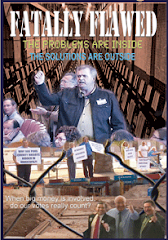By Robert Reich, former Secretary of Labor
FRIDAY, SEPTEMBER 3, 2010
RobertReich.org
Welcome to the worst Labor Day in the memory of most Americans. Organized labor is down to about 7 percent of the private work force. Members of non-organized labor — most of the rest of us — are unemployed, underemployed or underwater. The Labor Department reported on Friday that just 67,000 new private-sector jobs were created in August, which, when added to the loss of public-sector (mostly temporary Census worker jobs) resulted in a net loss of over 50,000 jobs for the month. But at least 125,000 net new jobs are needed to keep up with the growth of the potential work force.
Face it: The national economy isn’t escaping the gravitational pull of the Great Recession. None of the standard booster rockets are working. Near-zero short-term interest rates from the Fed, almost record-low borrowing costs in the bond market, a giant stimulus package, along with tax credits for small businesses that hire the long-term unemployed have all failed to do enough.
That’s because the real problem has to do with the structure of the economy, not the business cycle. No booster rocket can work unless consumers are able, at some point, to keep the economy moving on their own. But consumers no longer have the purchasing power to buy the goods and services they produce as workers; for some time now, their means haven’t kept up with what the growing economy could and should have been able to provide them.
1. The Origin of the Crisis
This crisis began decades ago when a new wave of technology — things like satellite communications, container ships, computers and eventually the Internet — made it cheaper for American employers to use low-wage labor abroad or labor-replacing software here at home than to continue paying the typical worker a middle-class wage. Even though the American economy kept growing, hourly wages flattened. The median male worker earns less today, adjusted for inflation, than he did 30 years ago.
But for years American families kept spending as if their incomes were keeping pace with overall economic growth. And their spending fueled continued growth. How did families manage this trick? First, women streamed into the paid work force. By the late 1990s, more than 60 percent of mothers with young children worked outside the home (in 1966, only 24 percent did).
Second, everyone put in more hours. What families didn’t receive in wage increases they made up for in work increases. By the mid-2000s, the typical male worker was putting in roughly 100 hours more each year than two decades before, and the typical female worker about 200 hours more.
When American families couldn’t squeeze any more income out of these two coping mechanisms, they embarked on a third: going ever deeper into debt. This seemed painless — as long as home prices were soaring. From 2002 to 2007, American households extracted $2.3 trillion from their homes.
Eventually, of course, the debt bubble burst — and with it, the last coping mechanism. Now we’re left to deal with the underlying problem that we’ve avoided for decades. Even if nearly everyone was employed, the vast middle class still wouldn’t have enough money to buy what the economy is capable of producing.
Where have all the economic gains gone? Mostly to the top. The economists Emmanuel Saez and Thomas Piketty examined tax returns from 1913 to 2008. They discovered an interesting pattern. In the late 1970s, the richest 1 percent of American families took in about 9 percent of the nation’s total income; by 2007, the top 1 percent took in 23.5 percent of total income.
It’s no coincidence that the last time income was this concentrated was in 1928. I do not mean to suggest that such astonishing consolidations of income at the top directly cause sharp economic declines. The connection is more subtle.
The rich spend a much smaller proportion of their incomes than the rest of us. So when they get a disproportionate share of total income, the economy is robbed of the demand it needs to keep growing and creating jobs.
What’s more, the rich don’t necessarily invest their earnings and savings in the American economy; they send them anywhere around the globe where they’ll summon the highest returns — sometimes that’s here, but often it’s the Cayman Islands, China or elsewhere. The rich also put their money into assets most likely to attract other big investors (commodities, stocks, dot-coms or real estate), which can become wildly inflated as a result.
Meanwhile, as the economy grows, the vast majority in the middle naturally want to live better. Their consequent spending fuels continued growth and creates enough jobs for almost everyone, at least for a time. But because this situation can’t be sustained, at some point — 1929 and 2008 offer ready examples — the bill comes due.
Continue reading here.
CD One Candidate Conor O’Callaghan Appears on Symone
-
With Arizona Congressional District One a major battleground in the 2024
elections (the incumbent, David Schweikert won by less than a point in
2022,) Demo...
2 years ago
















